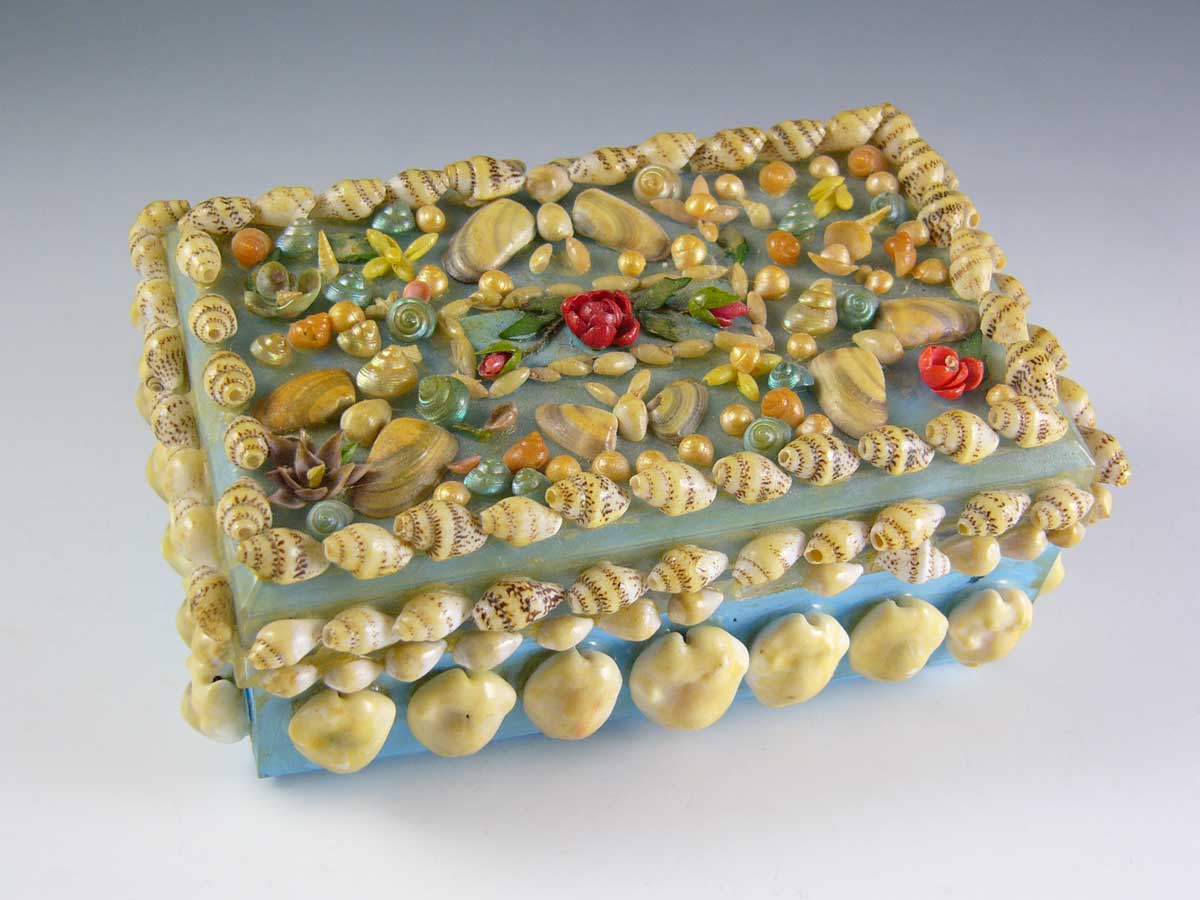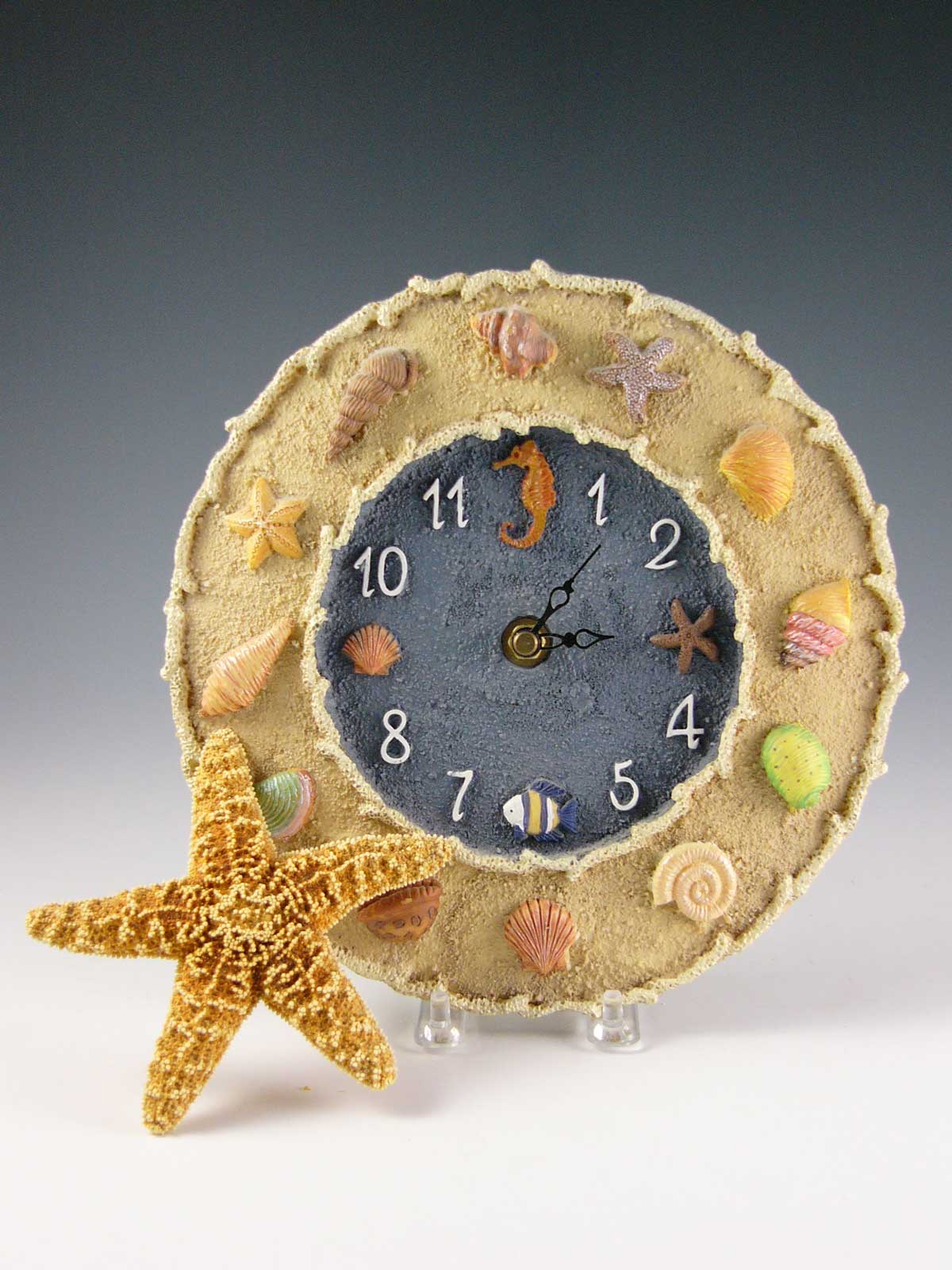September 2023
SMACK DAB IN THE MIDDLE
Shell Games: Creative projects extend that summer feeling
by Donald-Brian Johnson
Admit it: those lazy, hazy, crazy days of summer are OVER. Autumn’s here. Time to rinse out the swimsuits, deflate the floaties, and figure out what to do with that beach bag bulging with souvenir sea shells. Hmmm…
Well, you could always make something.
No kidding. Items made entirely of shells, covered with shells, or just dotted with the occasional accent shell, have been tops as summery souvenirs since at least the 1700s. In 1703, a London woman offered her services as an instructor in the delicate art of “shell work in flowers, sconces, and rocks.” Mary Granville Delany, another turn-of-the-18th-century Londoner, was renowned for her challenging shell projects. Among them: a chapel ceiling, with shells woven into a pattern resembling flower garlands. The fascination with shell craft as a refined art form continued well into the Victorian era. The 1876 guide “Ladies’ Fancy Work” offered detailed instructions (plus glue recipes) for using shells to form “exquisitely beautiful articles of adornment for parlor or dressing table.” As one British publication of the time put it, shells were “so brightly clean, so ornamental to a boudoir” that shell craft was a pursuit “peculiarly suited to the ladies.”
Tell that to the Marines. During the 1800s, many seafaring men brought “sailor’s valentines” to the girls back home. These octagonal wooden boxes had covers decorated with elaborate shell designs. Appropriate sentiments (e.g., “To My Sweetheart”), were picked out in shells of a contrasting color. Romantic legend has it that, in their downtime, these water-weary voyagers not only carved the boxes, but also came up with their intricate shell-patterned lids. Just another way of whiling away the hours between monsoons.
A more likely (if less sigh-inducing) theory is that even the Ancient Mariner, after spending months at sea, knew better than to return to his sweetheart empty-handed. Last-minute peace offerings were called for, and the Caribbean craftsmen of Barbados were happy to oblige. The labels found on many “sailor’s valentines” list their actual source as “Native Manufacturers in Fancy Work.”
By the mid-20th century, sailors were no longer crafting (or at any rate purchasing) their valentines, and other forms of shell art had become a bit less refined. Now, any gift shop claiming even the slightest proximity to water wasn’t complete without a shellcraft selection. Vacationers loved shell souvenirs. They were fun to look at, and cleverly made. They were inexpensive, so no need to shell out a bundle. And best of all, travelers could take them home and display them on the mantel. It was an unobtrusive way of telling the neighbors, “Guess where WE went this summer?”

A shell-decorated box
In the style of a sailor’s valentine: a shell box from the South Pacific, dating from World War II, in a jaunty shade of ocean blue. 3-12” w. x 5-1/2” l. Shell art courtesy of Maureen Maher and Jan Andreasen. (Image courtesy of the author and Hank Kuhlmann)

A shell-decorated clock
What time is high tide? Shell-decorated clock, with companion starfish. 9” d. Shell art courtesy of Maureen Maher and Jan Andreasen. (Image courtesy of the author and Hank Kuhlmann)
And what a variety to choose from! There were shell-covered boxes (a nod to the “sailor’s valentines”) shell paperweights, shell trinket holders, perfume bottles, mini-Christmas trees, and picture frames. How about shell coasters? Wreaths? Crosses and clocks? Soap dispensers and hanging planters? Luck onto the right shop, and you just might head home with a shell lamp, a shell sailing ship, even a litter of shell cats, or a combo of shell musicians. Pick more than two, and you could consider yourself a full-fledged conchylomaniac (in layman’s terms, an insatiable shell collector).
Fortunately, the mania to collect shell art is a relatively inexpensive one. Most examples can be found today for under $25, which will leave few buyers shell-shocked. That’s a far cry from the value placed on shells in centuries past. In the 1600s, one Dutch collector amassed more than 2,000 of them, which he kept locked in a treasure chest. To open the shell chest required three separate keys, each entrusted to a different person. Roemer Visscher, a Dutch contemporary, wrote that shells from distant lands had suddenly become as valuable as jewels. “It is bizarre,” said Visscher, “what a madman spends his money on.”
Gee. And those shells hadn’t even been turned into lamps.
Donald-Brian Johnson is the co-author of numerous Schiffer books on design and collectibles, including “Postwar Pop,” a collection of his columns. Please address inquiries to: donaldbrian@msn.com

